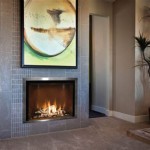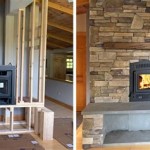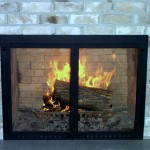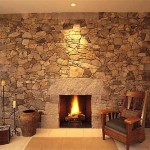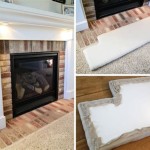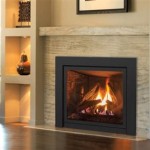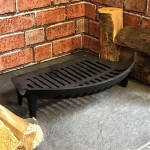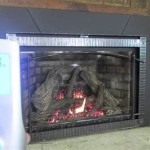Linear See-Thru Fireplaces: An Elegant Division and Focal Point
Linear see-thru fireplaces represent a sophisticated design choice for modern homes and commercial spaces. These fireplaces, also known as double-sided or peninsula fireplaces, offer a unique visual feature, allowing the flames to be viewed from two adjacent or opposing rooms. This design element instantly creates a focal point, enhances the ambience of multiple spaces, and contributes to a sense of openness and connectivity within a building's layout.
The appeal of a linear see-thru fireplace lies in its ability to seamlessly integrate into a variety of architectural styles. From minimalist modern to more traditional designs, these fireplaces can be adapted to complement the existing aesthetic. The elongated shape, often stretching several feet in length, provides a contemporary feel while the visibility from multiple angles maximizes the visual impact of the fire. Beyond aesthetics, see-thru fireplaces offer potential benefits related to heating efficiency and overall space design.
Key Considerations When Choosing a Linear See-Thru Fireplace
The selection of a linear see-thru fireplace involves several crucial considerations that impact both its appearance and functionality. Careful planning is essential to ensure the chosen model is suitable for the intended space and meets the specific needs of the homeowner or business owner. These considerations include fuel type, venting requirements, heat output, and framing options.
Fuel Type: Linear see-thru fireplaces are available in various fuel types, each offering distinct advantages and disadvantages. The most common options include gas (natural gas or propane), electric, and wood-burning models. Gas fireplaces are favored for their convenience, ease of use, and consistent heat output. They typically require professional installation to connect to a gas line and vent the exhaust. Electric fireplaces provide the easiest installation, as they only need an electrical outlet. They offer visual appeal but often generate less heat compared to gas or wood-burning options. Wood-burning fireplaces offer the classic look and feel of a real fire, but require more maintenance, including wood storage and regular cleaning. They also demand careful consideration of venting requirements to prevent smoke and carbon monoxide buildup.
Venting Requirements: Venting is a critical aspect of fireplace installation, particularly for gas and wood-burning models. Proper venting ensures the safe and efficient removal of combustion byproducts, preventing potential health hazards. Gas fireplaces typically utilize direct vent or vent-free technology. Direct vent fireplaces draw combustion air from outside and exhaust directly outdoors, providing a sealed combustion system. Vent-free fireplaces use room air for combustion and release exhaust directly into the room; however, they may not be permitted in all jurisdictions due to concerns about indoor air quality. Wood-burning fireplaces require a chimney or flue to vent smoke and gases. The chimney must be properly sized and constructed to ensure adequate draft and prevent backdrafting. Electric fireplaces do not require venting, simplifying the installation process.
Heat Output: The heat output of a linear see-thru fireplace is measured in British thermal units (BTUs). The appropriate heat output depends on the size of the space to be heated and the desired level of warmth. A fireplace with too little heat may not effectively warm the area, while a fireplace with excessive heat may create discomfort. Gas fireplaces offer a wide range of BTU outputs, allowing for precise control over the heat generated. Electric fireplaces typically provide less heat compared to gas models, making them more suitable for supplemental heating or aesthetic purposes. Wood-burning fireplaces can produce significant heat, but the output varies depending on the type of wood burned and the efficiency of the firebox.
Framing and Finishing: The framing and finishing around a linear see-thru fireplace significantly impact its overall appearance and integration into the surrounding space. Various materials can be used for framing, including wood, metal, stone, and tile. The choice of material should complement the architectural style of the room and the desired aesthetic. Non-combustible materials are essential for areas close to the fireplace opening to ensure safety and prevent fire hazards. Common finishing options include paint, stain, veneer, and decorative panels. The finishing details can be customized to create a seamless look or to highlight the fireplace as a distinct design element.
Design Possibilities with a See-Thru Fireplace
The versatility of linear see-thru fireplaces lends itself to a multitude of design applications. They can function as room dividers, connecting distinct spaces while maintaining a sense of openness. They can also be incorporated into feature walls, creating a dramatic focal point that enhances the overall aesthetic of the room. The elongated shape of these fireplaces allows for creative design solutions that maximize their visual impact and functionality.
Room Divider: One of the most popular applications of a linear see-thru fireplace is as a room divider. By placing the fireplace between two rooms, such as a living room and dining room or a bedroom and bathroom, it creates a visual separation while allowing light and views to pass through. This design approach can enhance the sense of spaciousness and connection between the two areas. The fireplace becomes a shared focal point, providing warmth and ambience to both spaces. The framing around the fireplace can be designed to complement the decor of both rooms, creating a cohesive and harmonious look.
Feature Wall: A linear see-thru fireplace can be integrated into a feature wall to create a stunning visual impact. The fireplace can be centered on the wall or offset to create a more dynamic composition. The wall itself can be constructed from a variety of materials, such as stone, brick, or wood, to add texture and interest. The fireplace opening can be framed with a contrasting material to highlight its presence. The feature wall can also incorporate other design elements, such as built-in shelving, artwork, or lighting, to create a cohesive and visually appealing design.
Enhancing Open Floor Plans: In open floor plan designs, a linear see-thru fireplace can serve as a subtle yet effective way to define different zones within the space. By placing the fireplace strategically, it can visually separate the living area from the dining area or the kitchen without completely closing off the space. This allows for a more functional and organized layout while maintaining the open and airy feel of the floor plan. The fireplace can also serve as a gathering point, encouraging interaction and connection between people in different areas of the space.
Safety and Installation Considerations
Ensuring the safe and proper installation of a linear see-thru fireplace is paramount. Improper installation can lead to safety hazards, such as fire risks, carbon monoxide poisoning, and structural damage. Compliance with local building codes and manufacturer's instructions is essential. Hiring qualified professionals for installation and maintenance is strongly recommended.
Building Codes and Permits: Before installing a linear see-thru fireplace, it is crucial to obtain the necessary permits from the local building department. Building codes regulate various aspects of fireplace installation, including venting requirements, clearances to combustible materials, and safety features. Failure to comply with building codes can result in fines, delays, and potential safety hazards. A qualified contractor can assist in navigating the permitting process and ensuring compliance with all applicable regulations.
Clearances to Combustible Materials: Maintaining adequate clearances between the fireplace and combustible materials, such as wood framing, drywall, and furniture, is critical to prevent fire hazards. Manufacturer's instructions specify the required clearances for each model. Non-combustible materials, such as metal, stone, or concrete, should be used in areas where clearances cannot be met. Heat shields can also be installed to reduce the risk of heat transfer to combustible materials.
Professional Installation: The installation of a linear see-thru fireplace is best left to qualified professionals. Gas fireplace installation requires expertise in gas line connections, venting systems, and safety controls. Wood-burning fireplace installation requires knowledge of chimney construction, firebox design, and draft requirements. Electric fireplace installation is generally simpler, but professional assistance may still be beneficial for complex installations or when integrating the fireplace into a custom framing design. A professional installer will ensure that the fireplace is installed correctly, safely, and in compliance with all applicable regulations.
Regular Maintenance: Regular maintenance is essential to ensure the safe and efficient operation of a linear see-thru fireplace. Gas fireplaces should be inspected annually by a qualified technician to check for gas leaks, burner malfunctions, and proper venting. Wood-burning fireplaces require regular chimney cleaning to remove creosote buildup, which can cause chimney fires. Electric fireplaces require minimal maintenance, but the heating elements and fan should be inspected periodically to ensure proper functioning. Following the manufacturer's recommended maintenance schedule is crucial for prolonging the life of the fireplace and preventing potential safety hazards.
In conclusion, linear see-thru fireplaces provide a unique blend of aesthetic appeal and functional benefits. By carefully considering the various factors discussed above, homeowners and designers can select and install a fireplace that enhances the beauty, comfort, and value of any space.

72 Inch See Thru Built In Linear Fireplace Custom Design

See Thru Linear Gas Fireplaces Modern The Davinci Collection

See Through Modern Linear Fireplaces Flare

See Thru Linear Gas Fireplaces Modern The Davinci Collection

See Through Modern Linear Fireplaces Flare

See Through Modern Linear Fireplaces Flare

Fireplacex 4415 See Thru High Output Linear Gas Fireplace Mountain Home Center

Napoleon Clearion Linear See Through Electric Fireplace Fine S Gas

Boulevard See Through 60 Inch Vent Free Linear Fireplace Fine S Gas

L1 See Thru Linear Gas Fireplace Natural The Center

